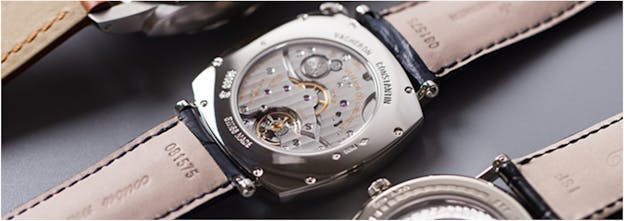Understanding Watch Jewels
Understanding Watch Jewels and Their Purpose
In mechanical watchmaking, “jewels” refer to tiny synthetic rubies or sapphires used inside a watch movement. But what are jewels in a watch really for — and why do some timepieces say 17 jewels or 21 jewels on the dial? In this guide, we’ll explain what watch jewels are, why they matter, and what those numbers mean in real-world watchmaking.
If you’ve ever wondered what the jewels in a watch actually do, why some watches say “21 jewels,” or if more jewels make a watch better — this guide will answer those questions and more.
What Are Watch Jewels?
Watch jewels, also known as jewel bearings, are tiny pieces of synthetic ruby or sapphire embedded in key points of a watch movement. Their primary purpose is to create a low-friction surface for moving parts like gears, pinions, and wheels.
What Are Watch Jewels Made Of?
Most modern watch jewels are lab-grown sapphires or rubies, both of which rate a 9 on the Mohs hardness scale — second only to diamonds. This hardness helps prevent wear and maintains accuracy over time.
Jewel within Paraflex via Rolex.com
These stones are placed around pivots, gears and pinions that allow for low friction. Having higher friction within the movement can cause variations in timekeeping and add to premature wear, corrosion and early servicing.
What Do Jewels Do in a Watch Movement?
The jewels in a watch help reduce friction, improve timekeeping precision, and prevent premature wear. When parts like the balance wheel or escape wheel spin thousands of times per hour, these hard jewels protect the pivots and sockets from wearing down.
Where Are Jewels Found in a Watch?
Watch jewels are commonly used in:
Pivot bearings for gear trains
Pallet fork pivots
Escape wheels
Automatic winding systems
Calendar mechanisms
If your watch has an exhibition case back, you may even see some of these pink or red stones embedded in the movement.
History of Watch Jewels
The first use of jewels in watches dates back to the early 1700s, pioneered by Swiss inventor Nicolas Fatio de Duillier and the Debaufre brothers. Early versions used natural rubies or diamonds, which increased the value and exclusivity of timepieces.
By the 20th century, watchmakers began using synthetic jewels, making this essential feature more accessible across brands and models.
What Does 17 or 21 Jewels Mean in a Watch?

The jewel count refers to how many jewels are used in the movement of a watch. For example, a “17-jewel” or “21-jewel” watch simply contains that number of functional jewel bearings.
What Does “17 Jewels” Mean?
A luxury watch with 17 jewels is considered fully jeweled. This typically includes all necessary pivot points and moving components in a hand-wound or simple automatic watch.
What Does “21 Jewels” Mean?
Some automatic watches include additional complications (e.g., calendar functions or automatic winding), which may require more jewel bearings. A “21-jewel” watch is often a sign of additional components and complexity.
Do More Jewels Make a Watch Better?
Not necessarily. While a higher jewel count can indicate more complex mechanisms, it doesn’t always translate to better performance or value. Watch brands have occasionally inflated jewel counts for marketing, so context matters.
How Many Jewels Should a Good Watch Have?
Most high-quality mechanical watches range from 17 to 25 jewels. Complicated chronographs or perpetual calendars may use 30+ jewels, while basic vintage models may have only 7 or 11.
Summary: Why Watches Have Jewels
Purpose: Reduce friction and wear
Material: Synthetic ruby or sapphire
Typical count: 17 to 25 jewels
Location: Bearings, escape wheels, gear pivots, winding system
Not decorative: Different from gem-set bezels or dials
Understanding what jewels in a watch do adds an extra layer of appreciation for the engineering behind mechanical timepieces. Whether you’re eyeing a 17-jewel Seiko or a complex Swiss chronograph, now you know what those numbers really mean.
FAQ’s
Q. What are the jewels inside a watch made of?
A. Most watch jewels are made of synthetic ruby or sapphire. These lab-grown stones are extremely hard, helping reduce wear and friction in the movement.
Q. Why do watches have jewels?
A. Jewels reduce friction between moving parts inside the watch movement, which improves accuracy and longevity.
Q. What does 17 jewels mean on a watch?
A. A 17-jewel watch contains 17 synthetic ruby bearings, typically covering all pivot points in a standard hand-wound movement.
Q. What does 21 jewels mean in a watch?
A. A 21-jewel watch usually includes additional components like automatic winding or calendar functions that require more jewel bearings.
Q. Do more jewels mean a better watch?
A. Not necessarily. More jewels can indicate added complexity, but high jewel counts beyond what’s functionally needed don’t always mean better quality.
Explore more:
→ Manual-Wind Watches Collection
→ Automatic Watches Collection
→ Watches with Exhibition Case Backs


